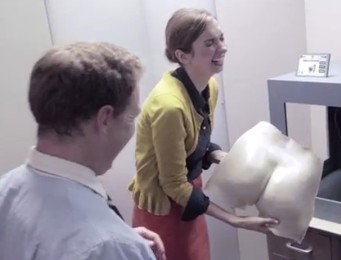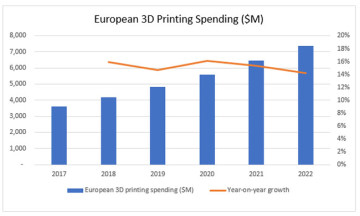 Data gathered by LearnBonds claims the 3D printing industy will surge 155 percent hitting $40.8 billion in value by 2024.
Data gathered by LearnBonds claims the 3D printing industy will surge 155 percent hitting $40.8 billion in value by 2024.
Apparently the reason is evolving value chains, market innovations, and cutting-edge technology developments are pushing 3D printing into the mainstream market. This type of production has surged in recent years and a growing number of businesses use 3D printing solutions, allowing them speed and flexibility while reducing costs.
3D printing enables the production of complex shapes using less material than traditional manufacturing methods, which is why it is widely used for small production runs, prototyping, small business, and educational use.
In 2020, the global 3D printing industry is expected to be worth $16 billion, revealed Wohlers Associates Annual Report on the State of 3D Printing. In the next two years, the market revenue is forecast to touch $25.5 billion. Statistics indicate the strong upward trend is set to continue in the following years, with the market revenue growing by a compound annual growth rate of 26.4 percent between 2020 and 2024.
The State of 3D Printing Report by Sculpteo revealed that in 2020, the most popular use case of 3D printing was prototyping among 68 percent of those asked, a 34 per cent rise compared to 2017 figures. Another 59 per cent of companies and businesses used the technology for proof of concept purposes, 36 per cent more than three years ago.
Statistics show that 49 percent of companies used 3D printing in production, a 27 percent rise on 2017. Research and education and creation of mechanical and spare parts follow with 42 percent and 40 percent of respondents, respectively.









